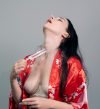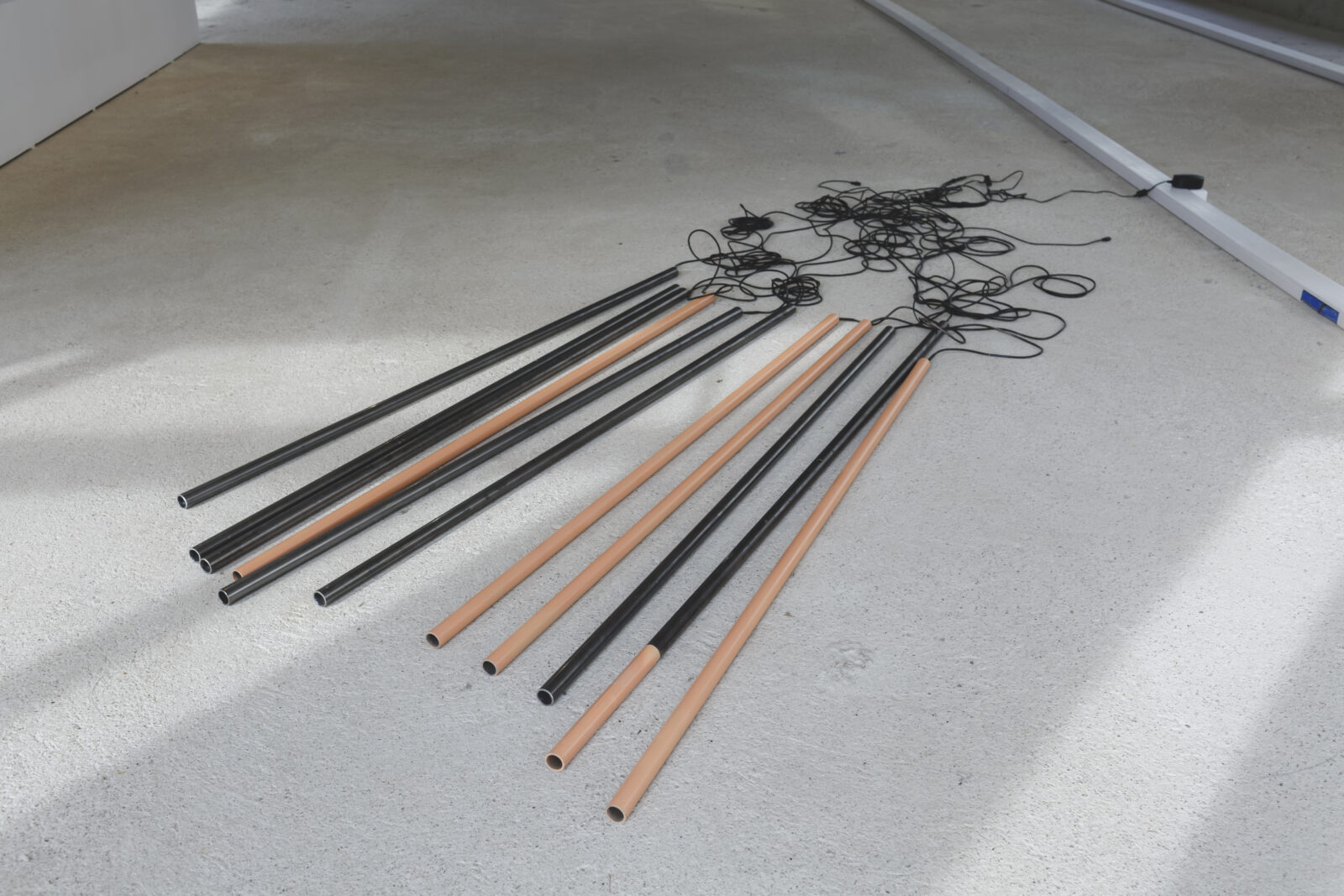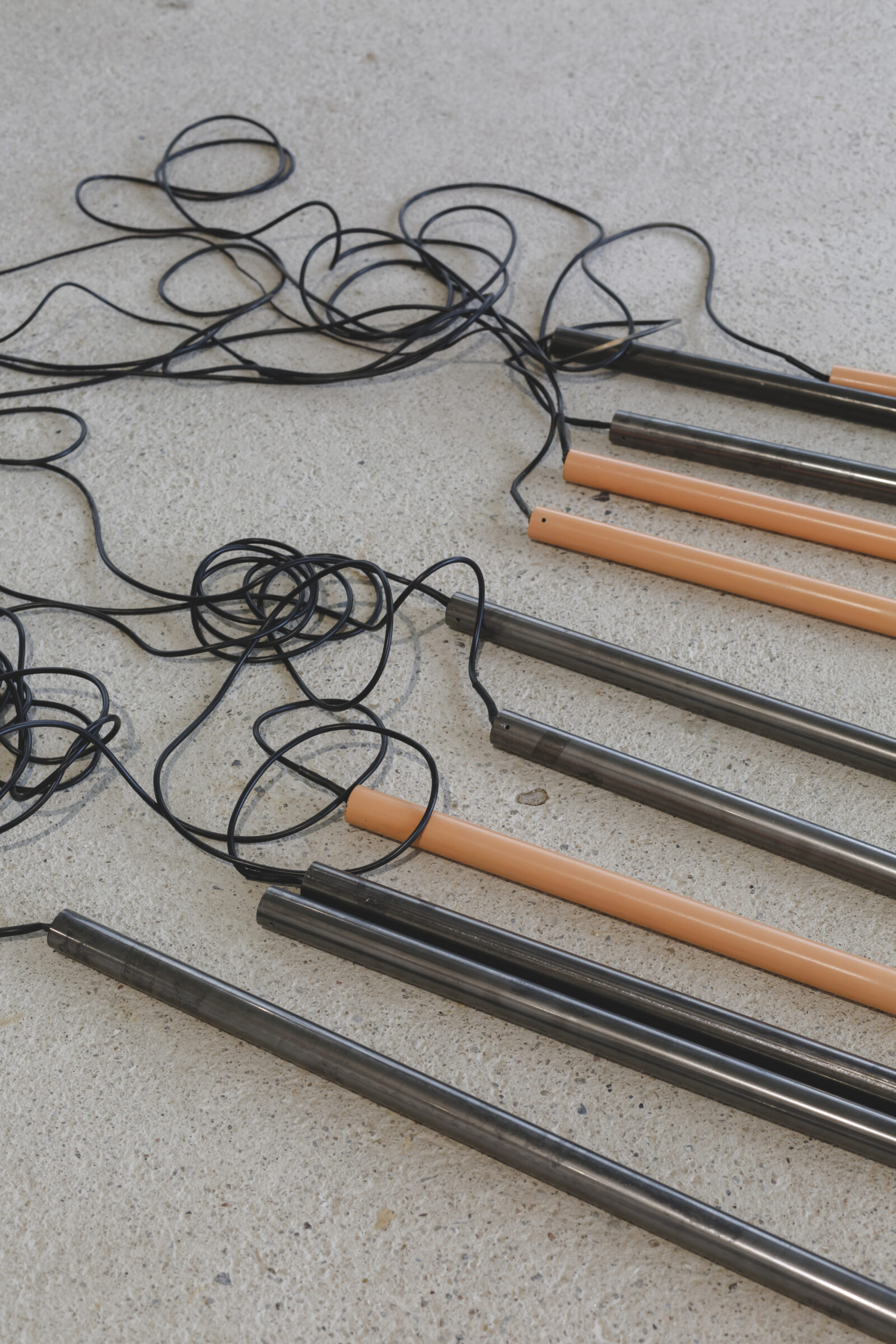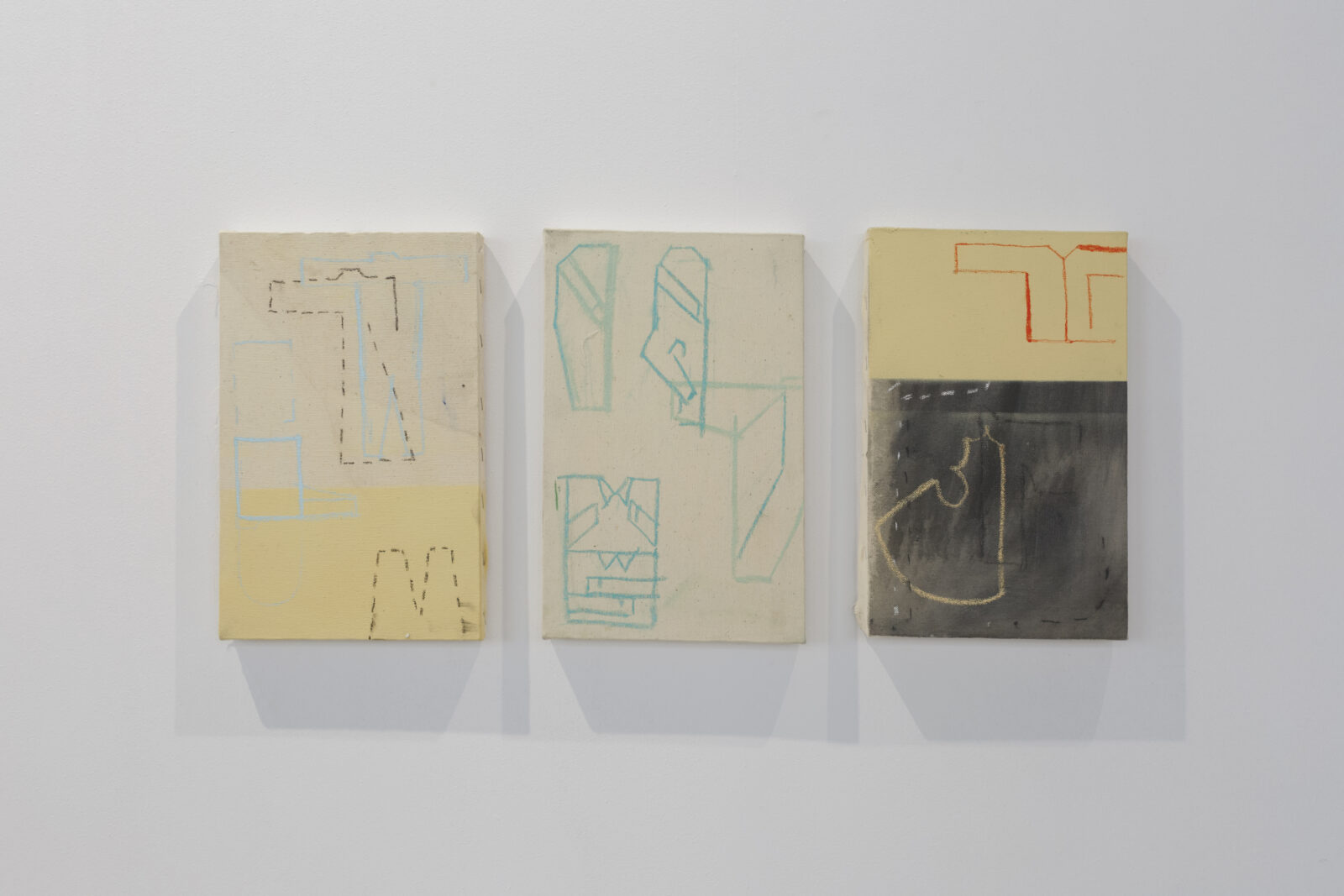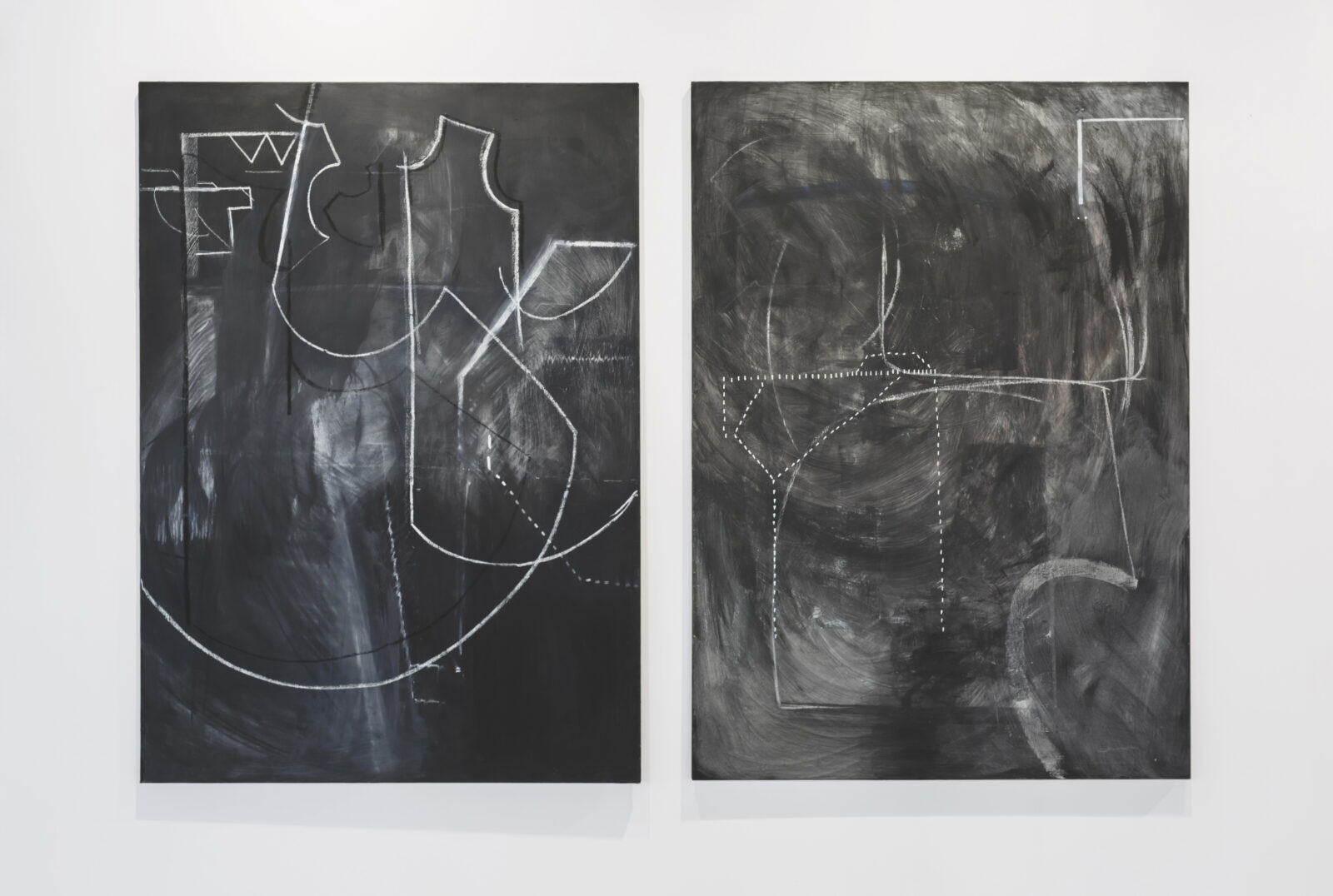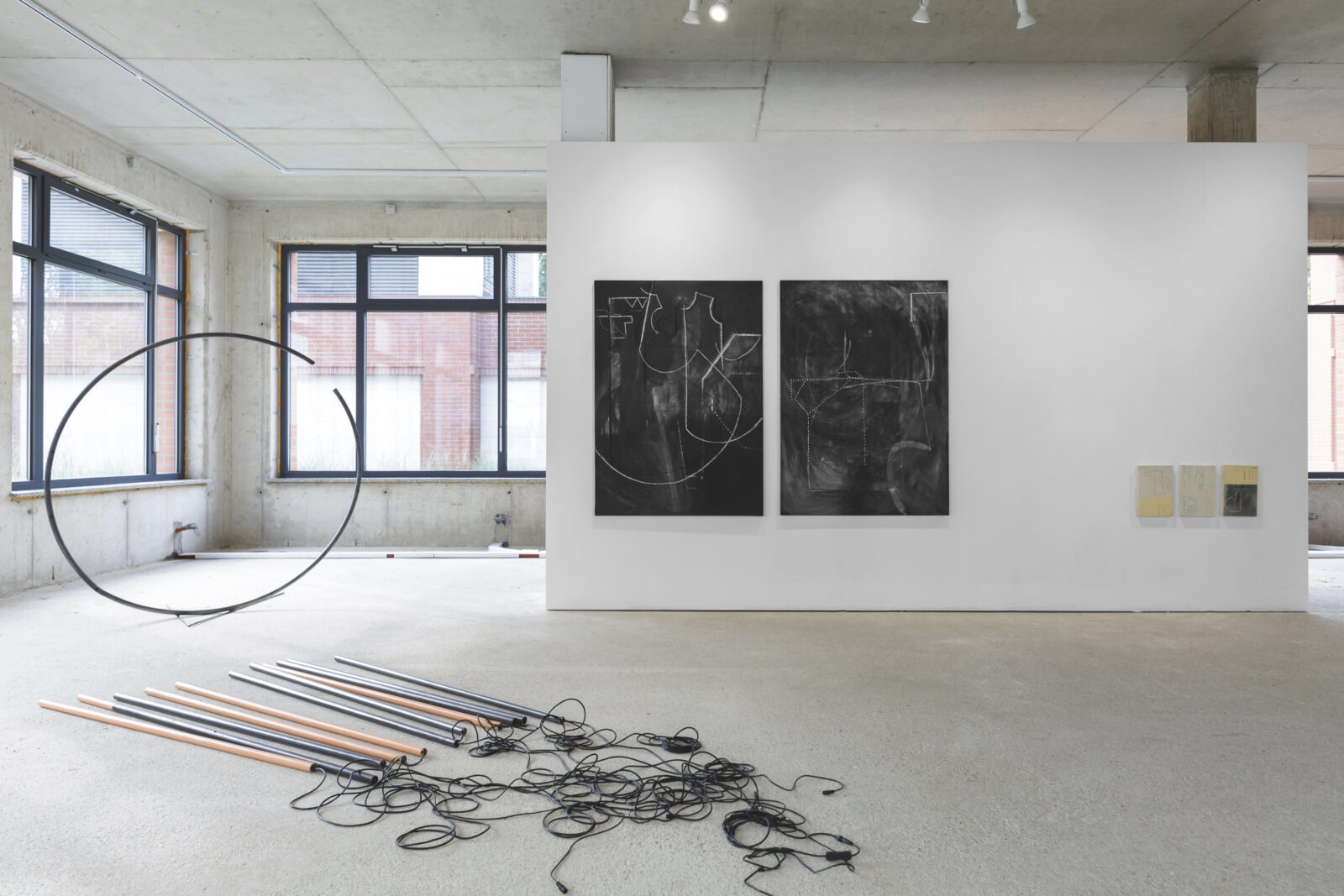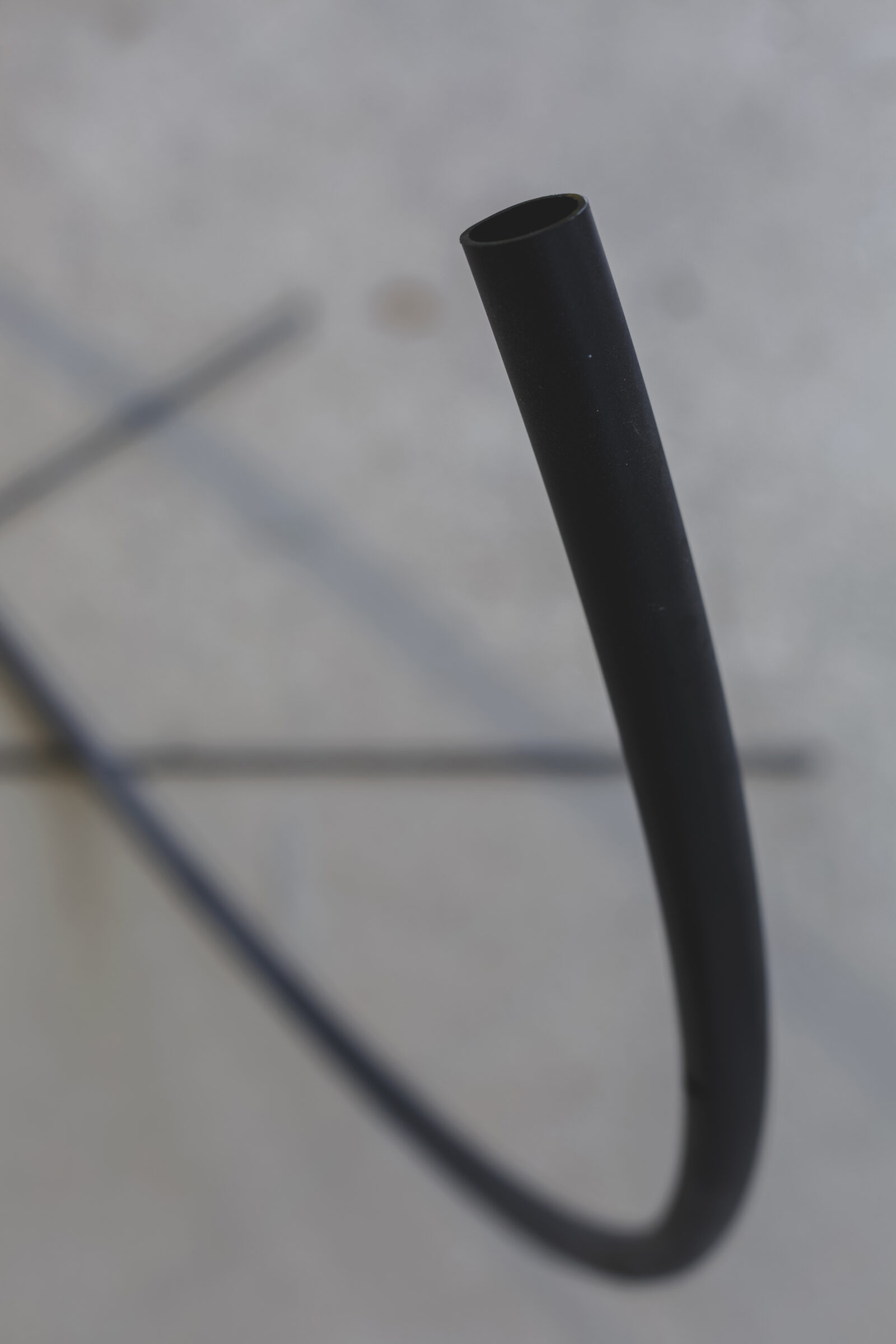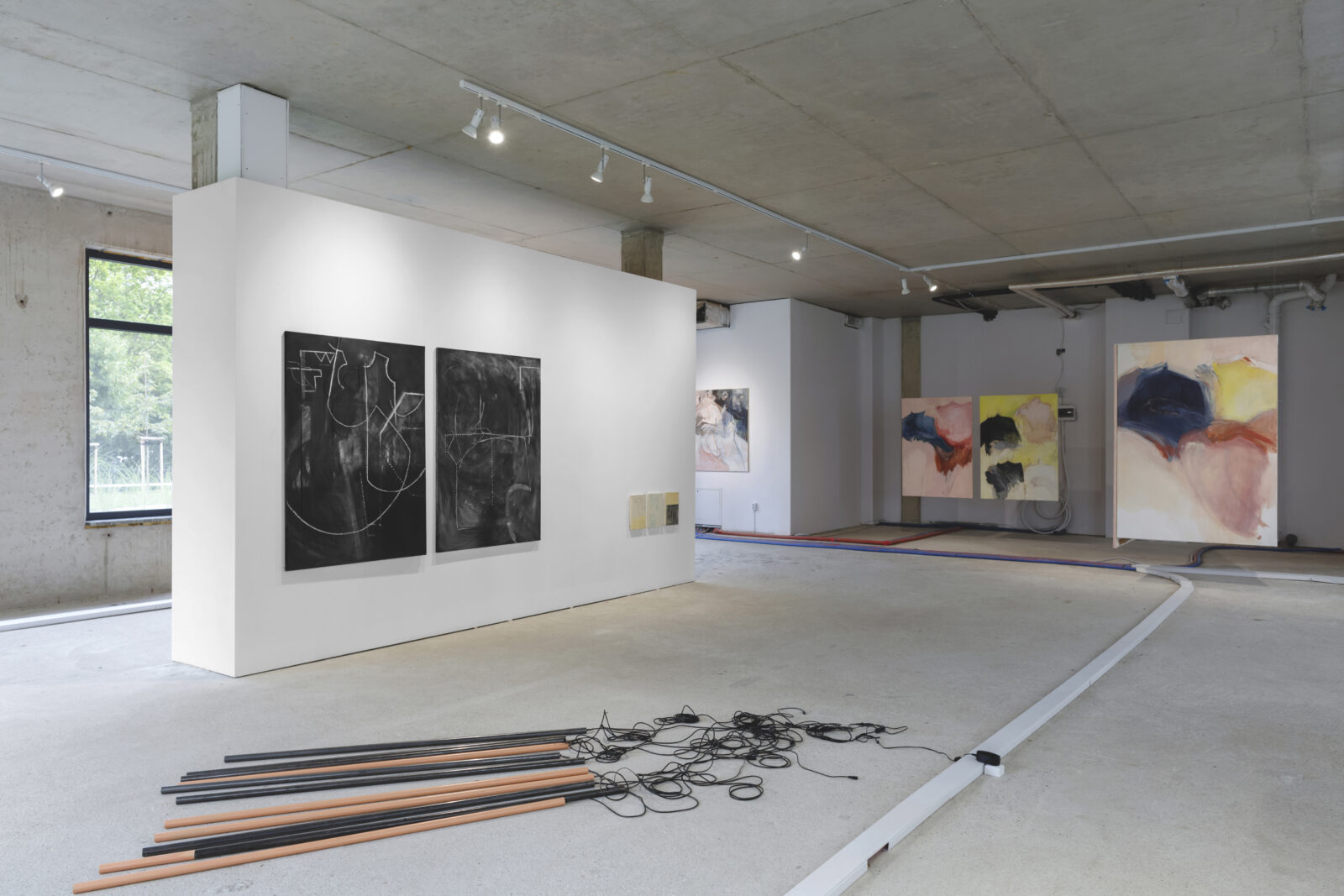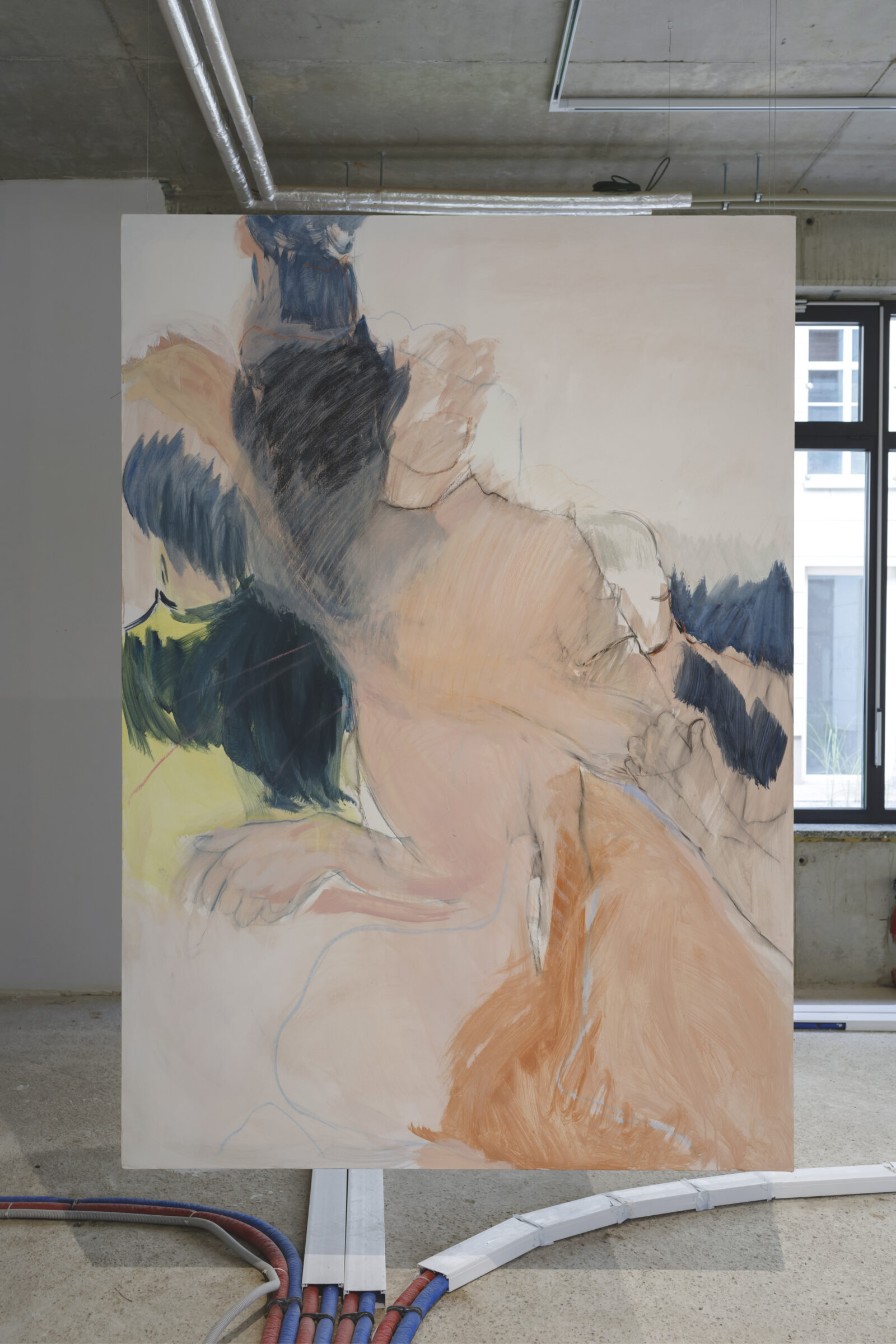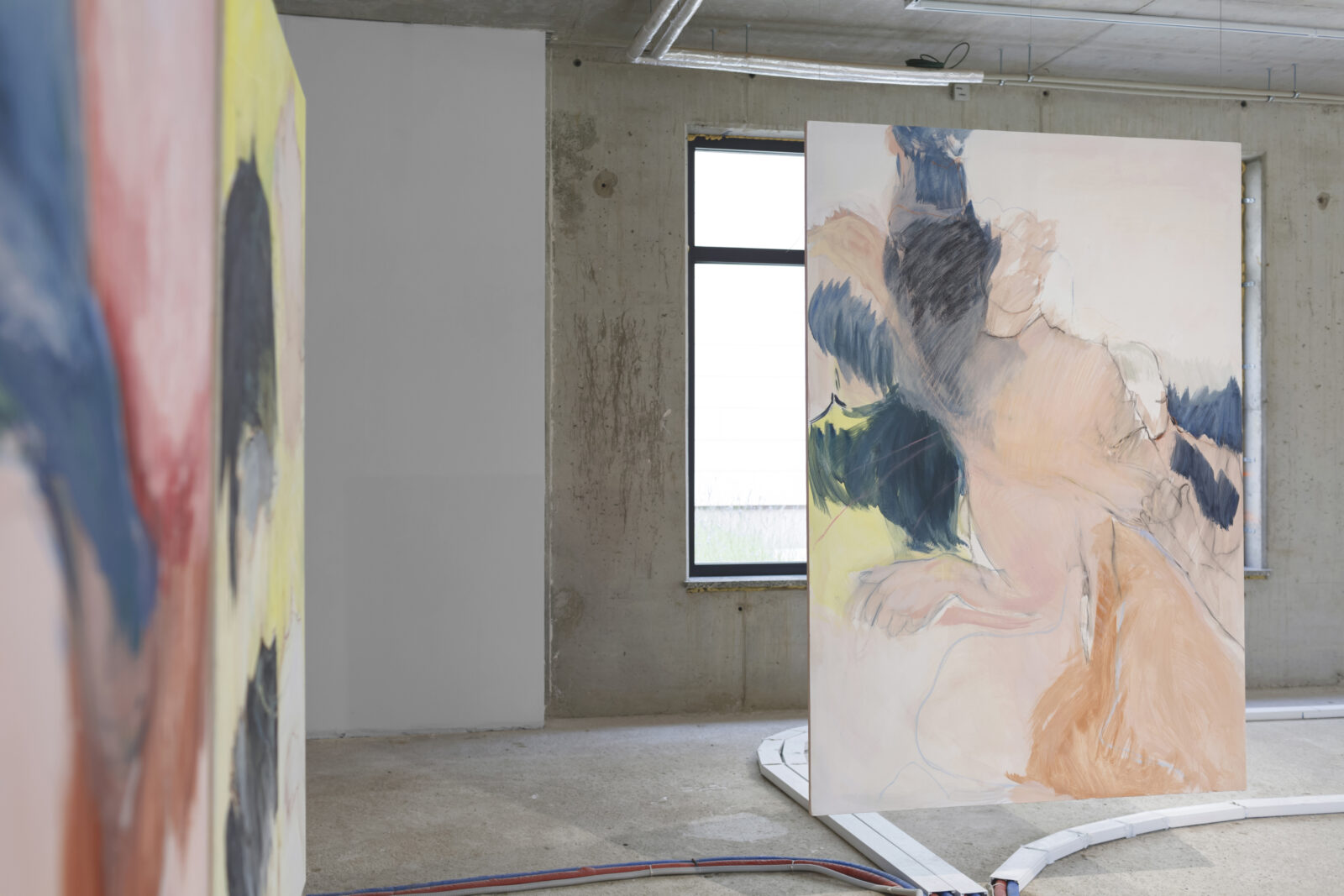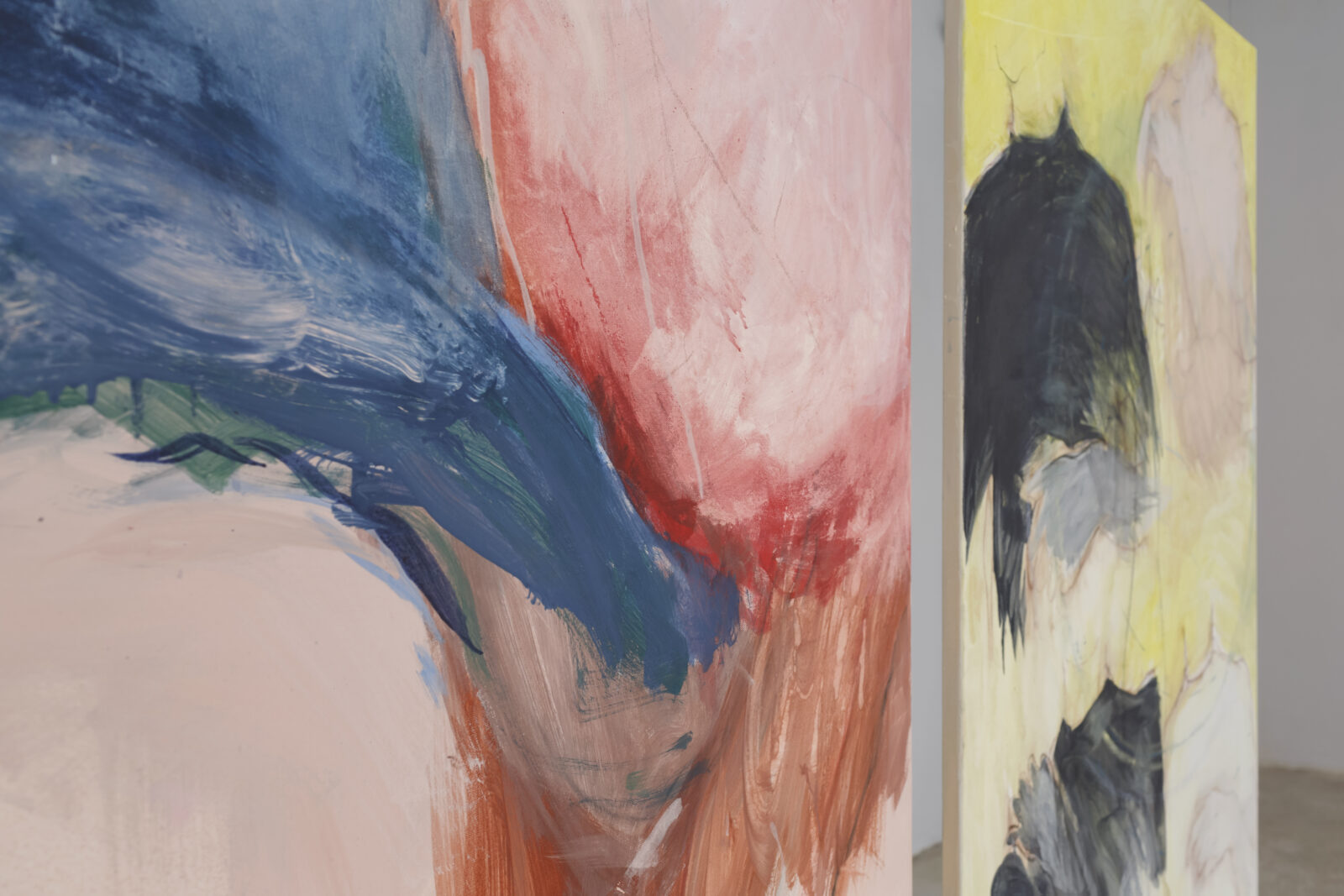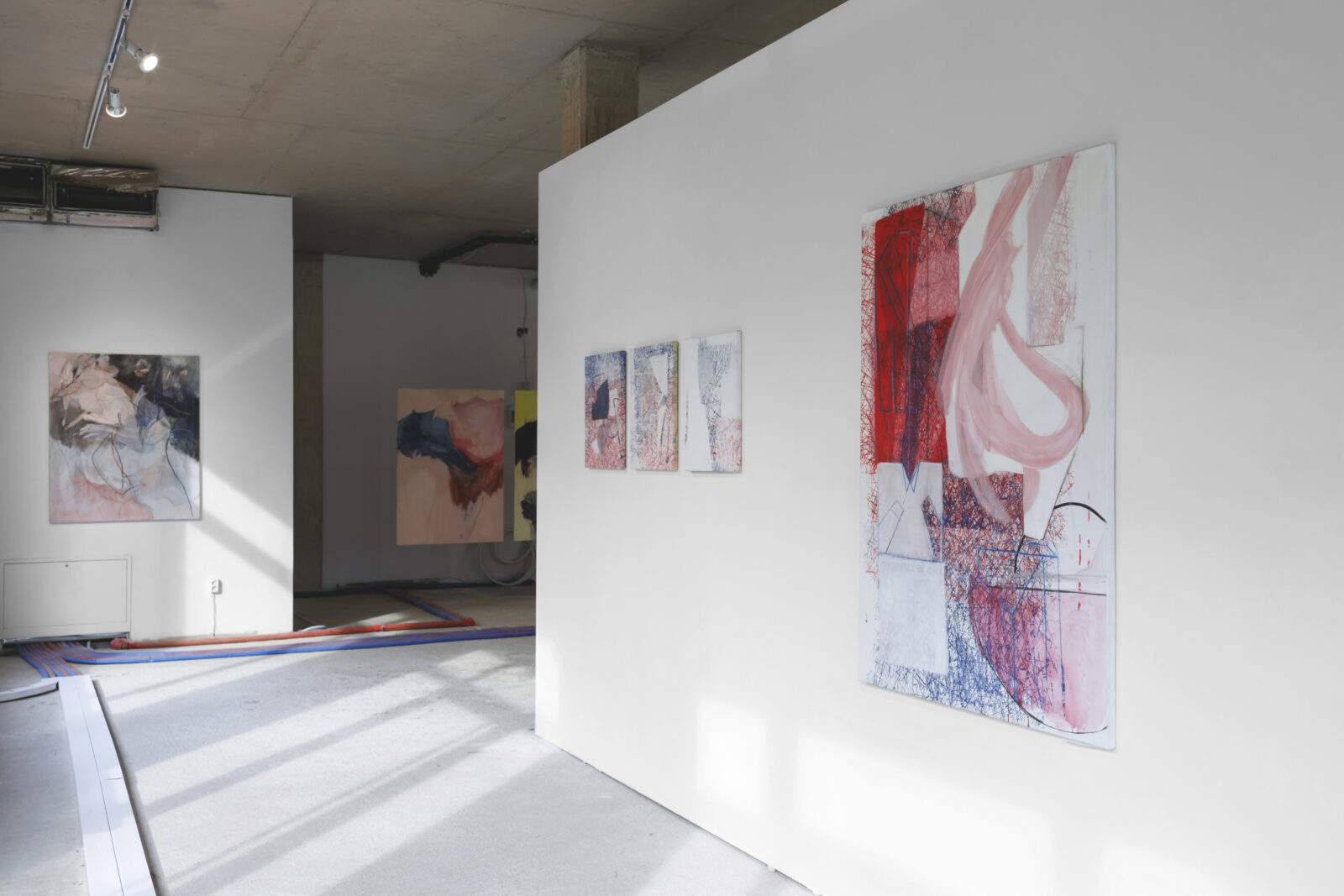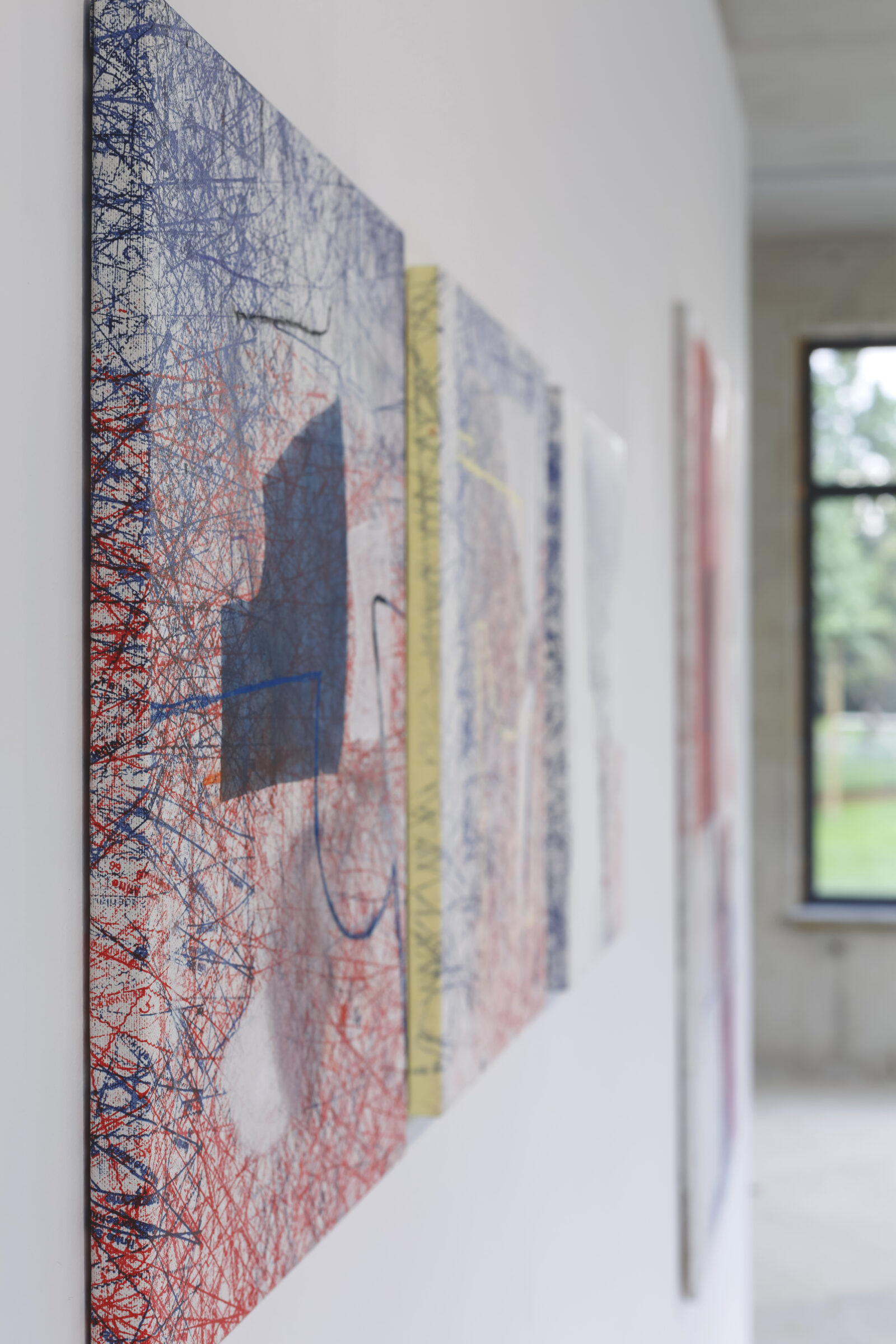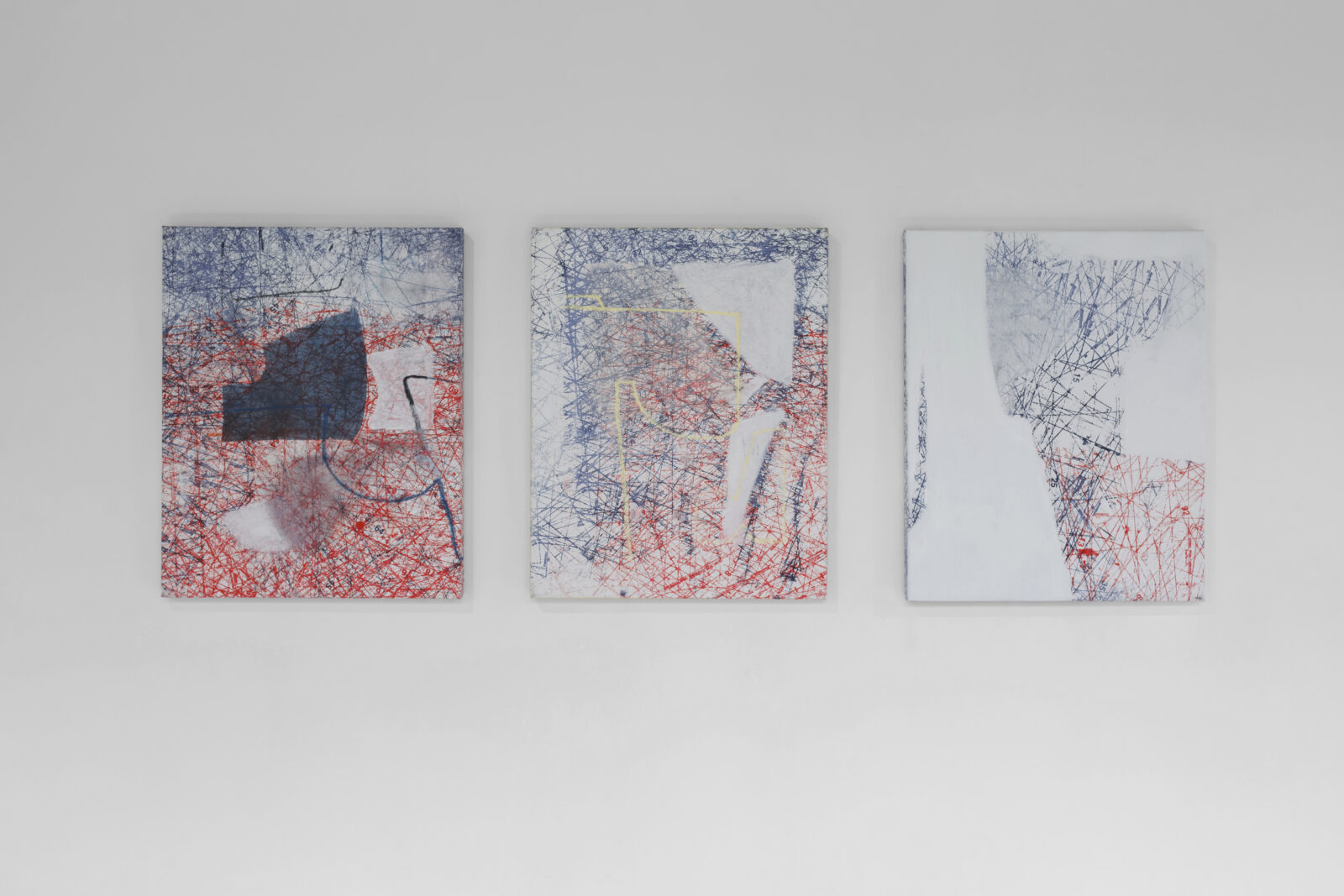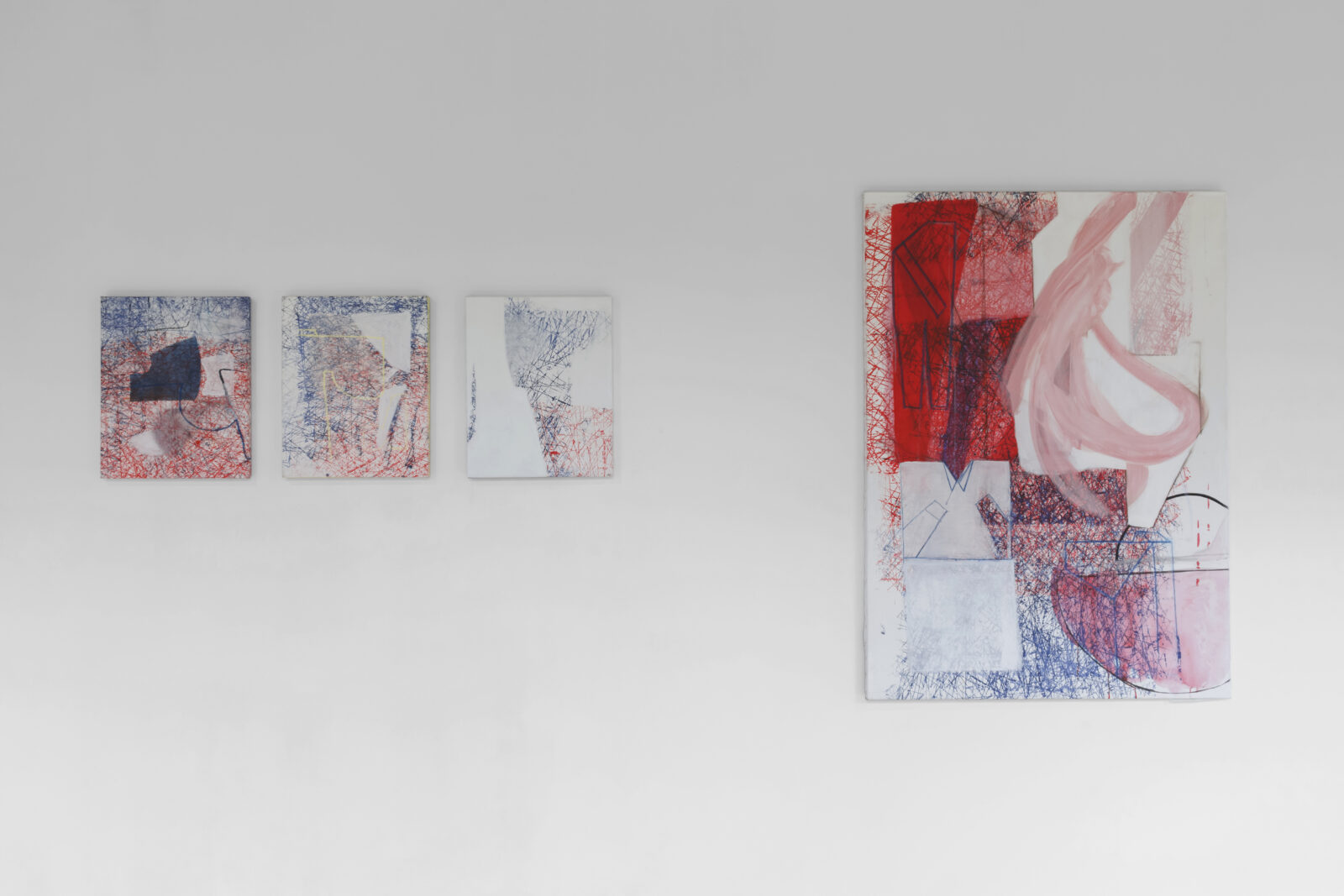Po Sympozjum Wrocław ‘70 nie zostało zbyt wiele materialnych obiektów – kilka makiet, projektów rzeźb, planów rozwiązań urbanistycznych, katalog oraz czarno-białe zdjęcia z wystawy, których autorem jest Tadeusz Rolke. Widać na nich modnie ubrane i uczesane osoby lekko pochylające się nad obiektami, krzyżujące na piersiach ręce, z zainteresowaniem podtrzymujące policzek. Inne podnoszą głowę, aby zobaczyć powieszoną rzeźbę, stają mocniej na jednej nodze, podnoszą papierosa do ust czy poprawiają okulary. Magdalenę Sadłowską interesuje ta subtelna choreografia w przestrzeni wystawy. Obserwuje drobne, niezauważalne i powtarzalne gesty. Pomimo upływu lat pewne ruchy pozostają uniwersalne. Sformalizowane, wyćwiczone rytuały, które nasze ciała odtwarzają bezwiednie w sytuacjach codziennych, jak ubieranie się, czesanie, nakładanie zegarka, po gesty wskazujące na rozgorączkowanie i ekscytację podczas ważnych wydarzeń.
W pastelowych obrazach Magdaleny Sadłowskiej jest pewna nerwowość, szkicowość, drżenie. Pokazują zmultiplikowane ciała, sformatowane przez gesty i modę. Artystkę inspirują stare magazyny „lifestylowe”, np. „Przyjaciółka”, „Świat Mody”, „Sport”, witryny sklepów domu modowego Hoffland, poradniki dla kobiet z okresu PRL-u. W swoich obrazach przemalowuje wykroje ubrań dołączane do czasopism. Dziś, w czasach masowej produkcji i turbokapitalizmu, są one zapomnianym reliktem, a w latach 60. czy 70. były pożądanym przedmiotem pozwalającym na własnoręczne tworzenie najmodniejszych kreacji. Sadłowska przemalowuje rysunki techniczne z poradników dla szkół odzieżowych. Niczym kredą na tablicy rysuje zawiłe mapy. Geometryczne figury pokazywały trajektorię ruchów, które należy wykonać, aby nie zostać w tyle i podążać za bieżącym kanonem piękna oraz wielkomiejskim blichtrem nowoczesności. Na obrazach Magdaleny Sadłowskiej tracą klarowność, drgają i urywają się nagle.
We wcześniejszym cyklu malarskim „Ćwiczka” Sadłowska nawiązywała do kultury fizycznej, sal gimnastycznych, powtarzalności ruchów w dążeniu do formy i perfekcji. Nagromadzała figury wykonujące skomplikowane akrobacje, przemieszczała je, zacierała, dochodząc niemal do abstrakcji. Powtarzalność ćwiczeń sportowych, wykrojów ubrań jest dla artystki metaforą czegoś większego ‒ pracy twórczej, polegającej także na monotonnym powtarzaniu gestu malarskiego, przemalowywaniu, powracaniu do szkicu i schematu w dążeniu do utopii perfekcji. Jednak przede wszystkim twórczość Magdaleny Sadłowskiej jest metaforą kultury, która wyznacza wzorce zachowań, dyscyplinuje jednostki, nadaje im rytm. Jak we współczesnej antropologii ciała, artystka ukazuje ludzi jako ciała-podmioty, konstruowane i modelowane przez różne aspekty życia społecznego. Tradycja, moda, miasto, władza, technologia konstruują ciała, co stawia pytanie o możliwość indywidualności. Czy choć jeden z gestów, które wykonamy, zwiedzając wystawę, będzie niepowtarzalny? Czy skorzystamy tylko z wyćwiczonego repertuaru póz, kroków i choreografii?

projekt graficzny: Magdalena Jaskułowska

